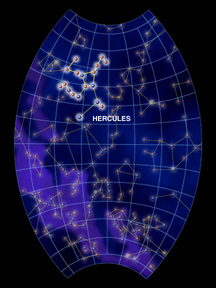The Constellation Hercules, the great warrior
Click on image for full size
Hercules
Hercules, the great Greek warrior, can be seen kneeling in the sky for
northern latitudes throughout the Spring months. Hercules first
becomes visible in the east in April, and works his way high across
the night sky through October. From the southern hemisphere, he
appears low in the north. Four of Hercules' brighter stars form what
is commonly known as the Keystone. Hercules' arms and legs extend
from this central square.
By far the most exciting object to see in Hercules is the magnificent
globular cluster M13, which is visible in dark night skies even
without binoculars or a telescope. With the naked eye, this cluster
of more than 300,000 stars appears as a faint fuzzy spot between the
stars which form the western side of the Keystone.
Many other constellations were unfortunate victims of Hercules, and
thus were also placed in the sky. According to the legends
surrounding Hercules, he slew Leo, the Lion,
Draco, the Dragon, and Hydra, a
Serpent with nine heads, as part of his Twelve Labors. Cancer, the
Crab was sent by Hera to annoy Hercules in his battles, and became yet
another victim of the hero.
You might also be interested in:

What types of instructional experiences help K-8 students learn science with understanding? What do science educators teachers, teacher leaders, science specialists, professional development staff, curriculum designers, school administrators need to know to create and support such experiences?
...more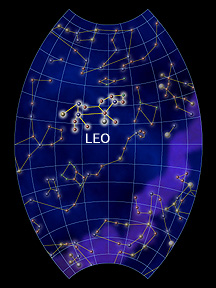
Leo, the Lion, is a very majestic feline. Leo's head and mane are formed by an asterism known as the Sickle which looks like a backward question mark. One of the brightest spring stars, Regulus (Latin
...more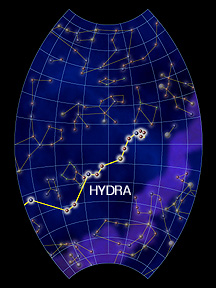
Hydra is the longest constellation in the sky (>90 degrees) and is also the largest in terms of area. It is so long that it takes more than six hours to rise completely. Along its northern side are the
...more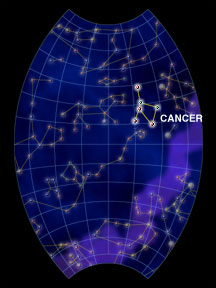
Cancer, the Crab, is a member of the Zodiac, a group of constellations that the Sun travels through each year. Cancer spends half of the year in the sky. It first rises in December and is visible through
...more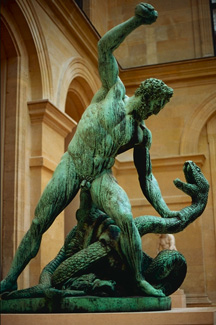
According to the Greek mythology, a particular group of stars represents the figure of the most famous Greek hero, Heracles. Heracles was a muscular man endowed with extraordinary courage and physical
...more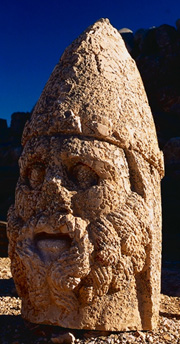
According to the Greek mythology, a particular group of stars represents the figure of the most famous Greek hero, Heracles. Heracles was a muscular man endowed with extraordinary courage and physical
...more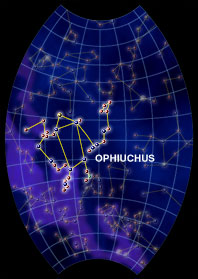
The constellation Ophiuchus represents the Serpent Bearer. This large constellation can be seen in the night sky from June through October. Although most of the stars are dim, Ophiuchus' teapot shape
...more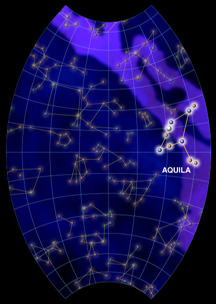
Aquila, the celestial eagle, is one of the three constellations which have bright stars forming the Summer Triangle. A nearly perfectly straight line of three stars symbolizes part of the wings. The center
...more


